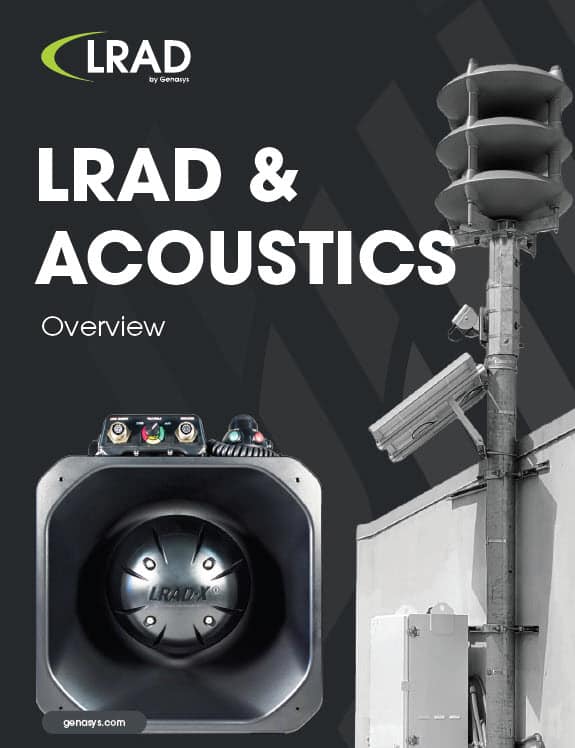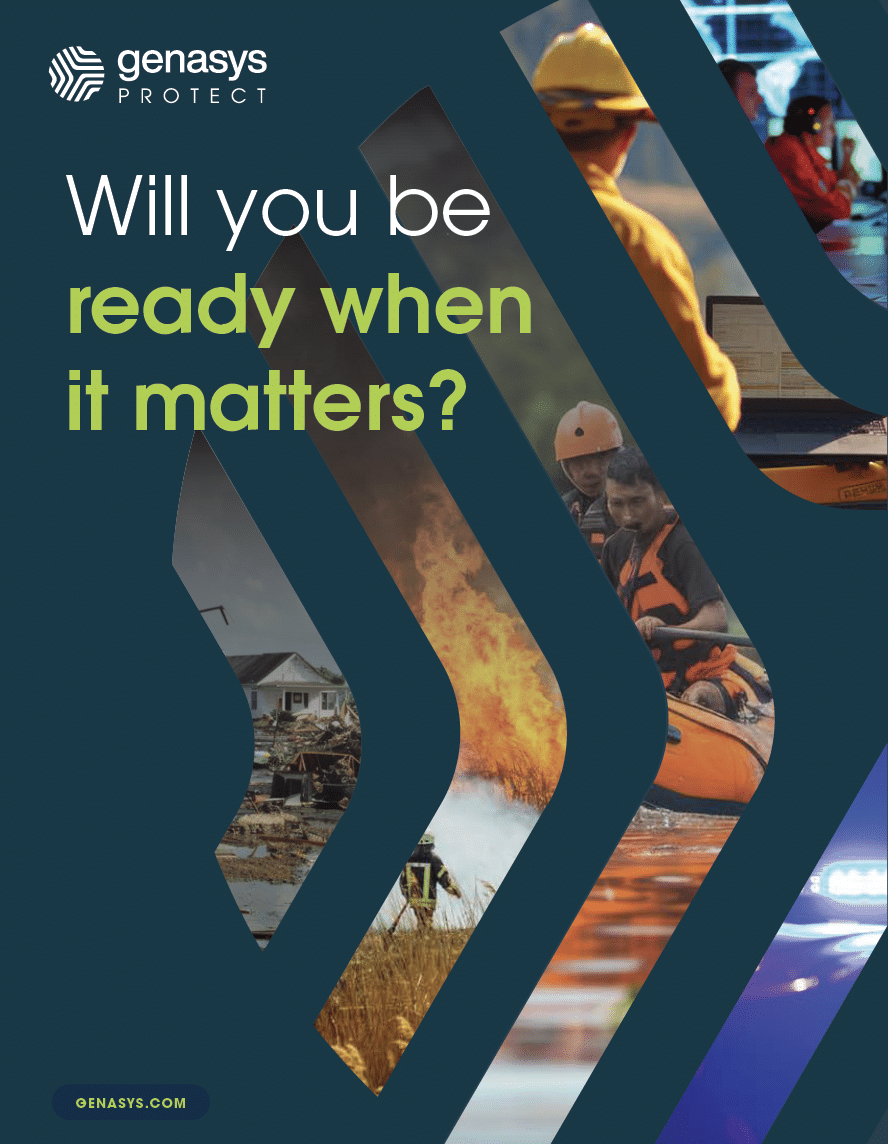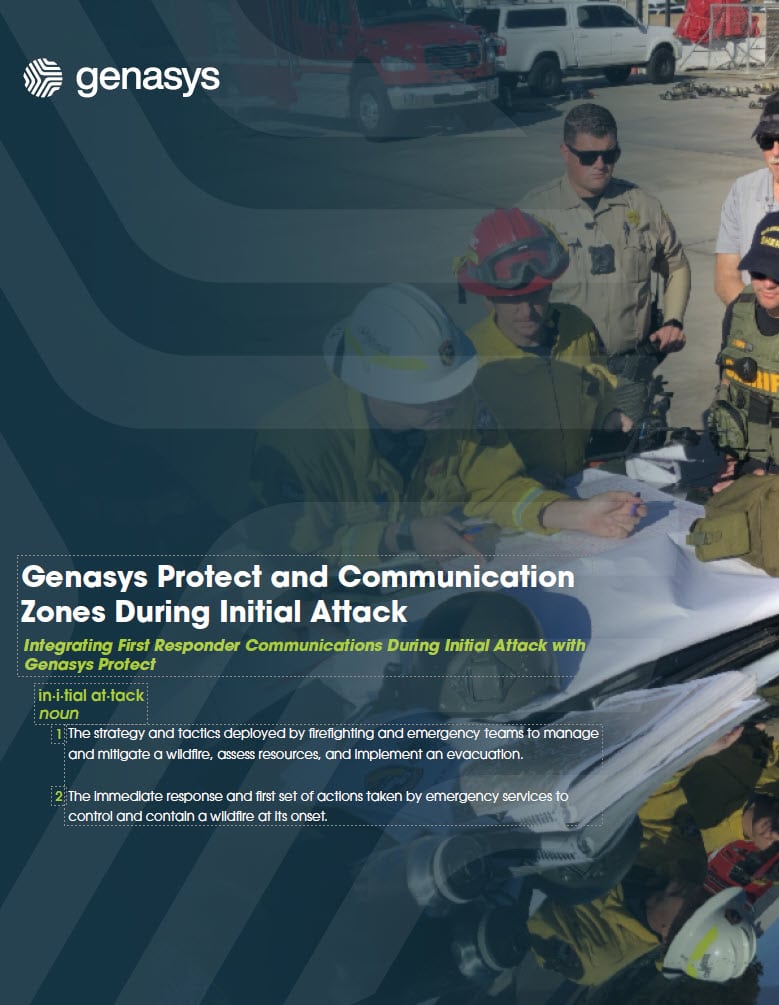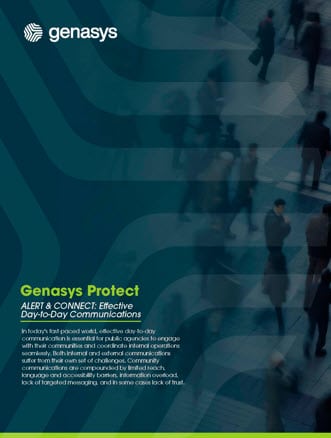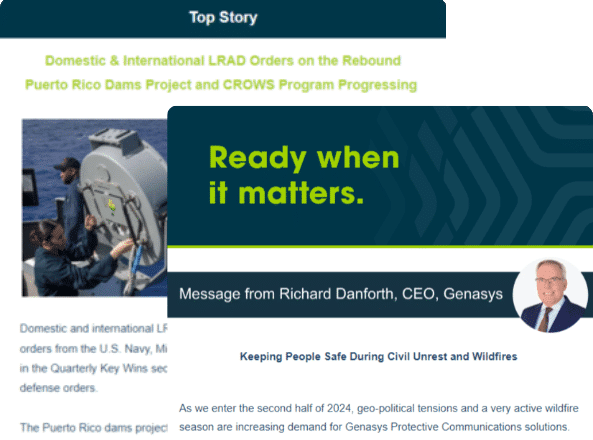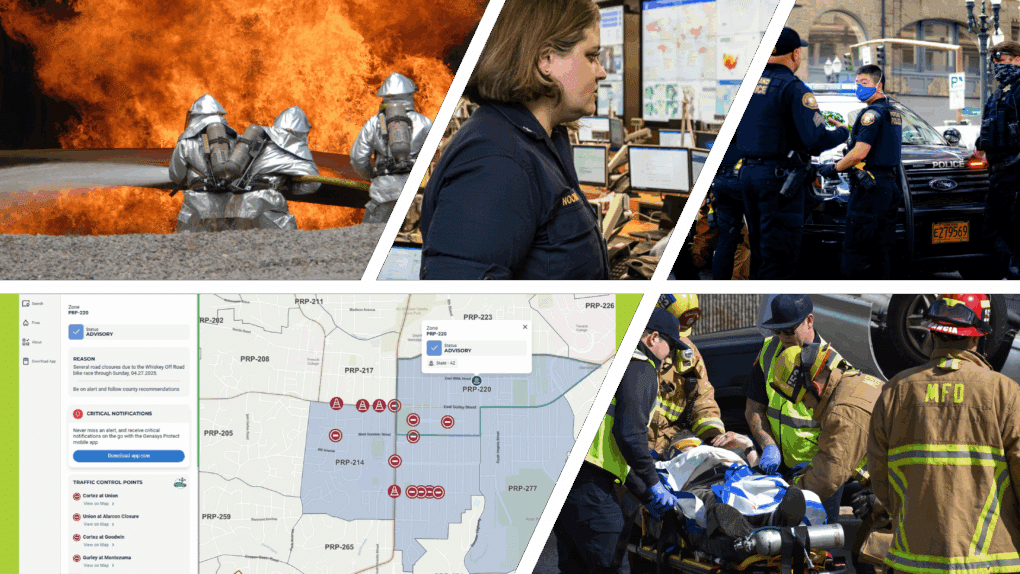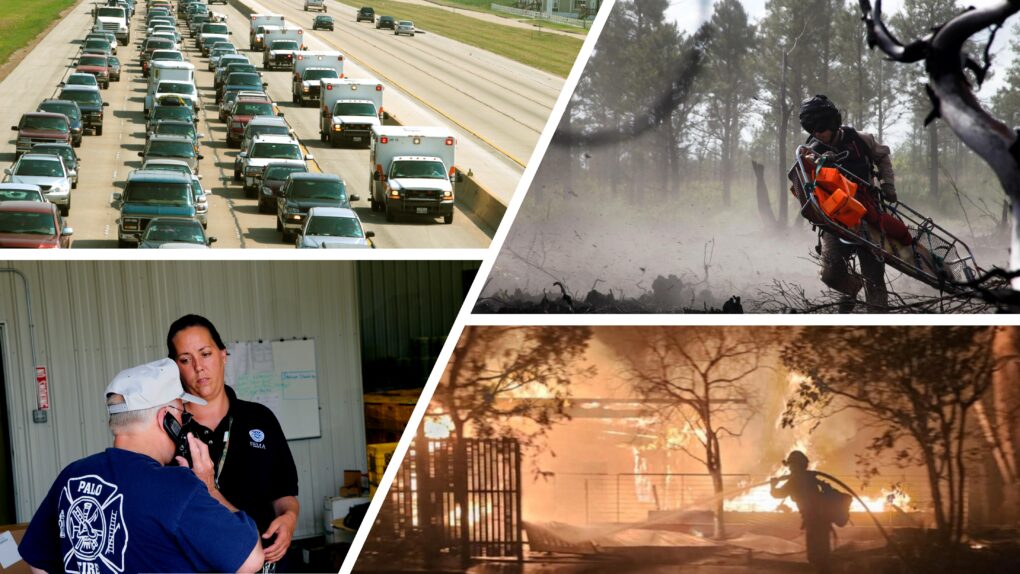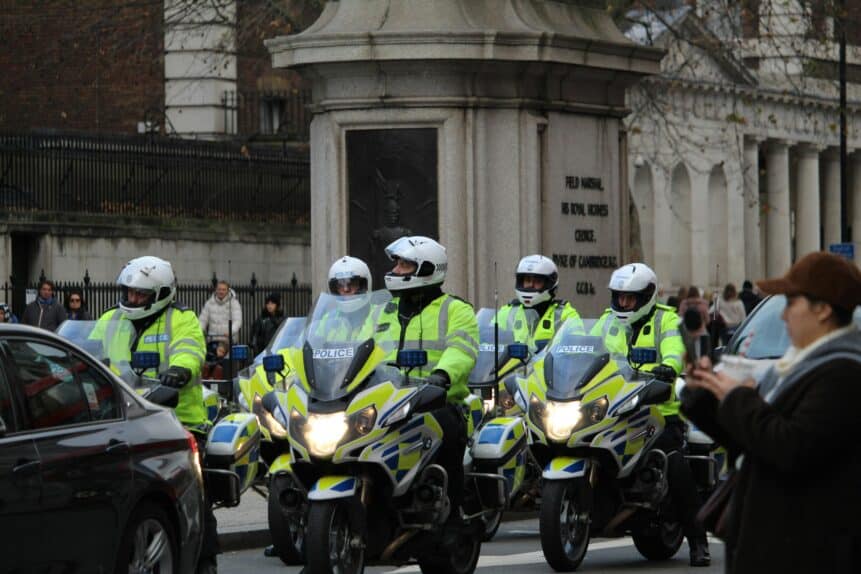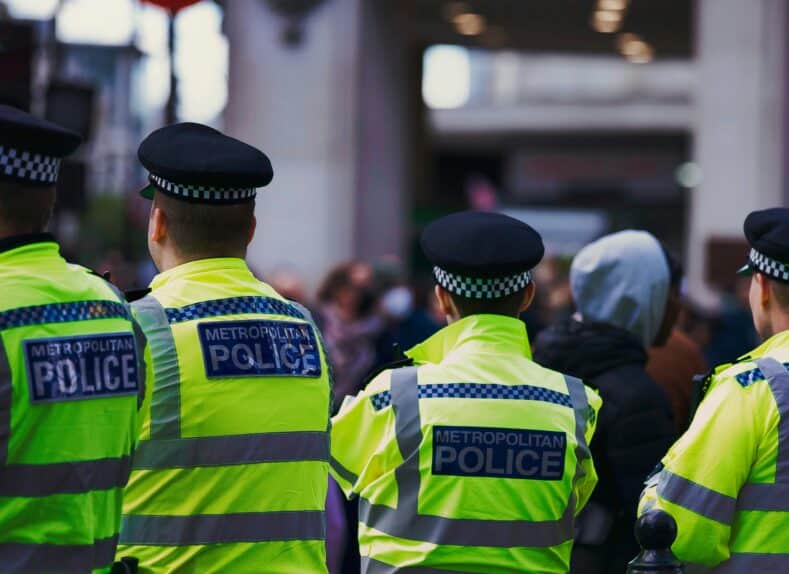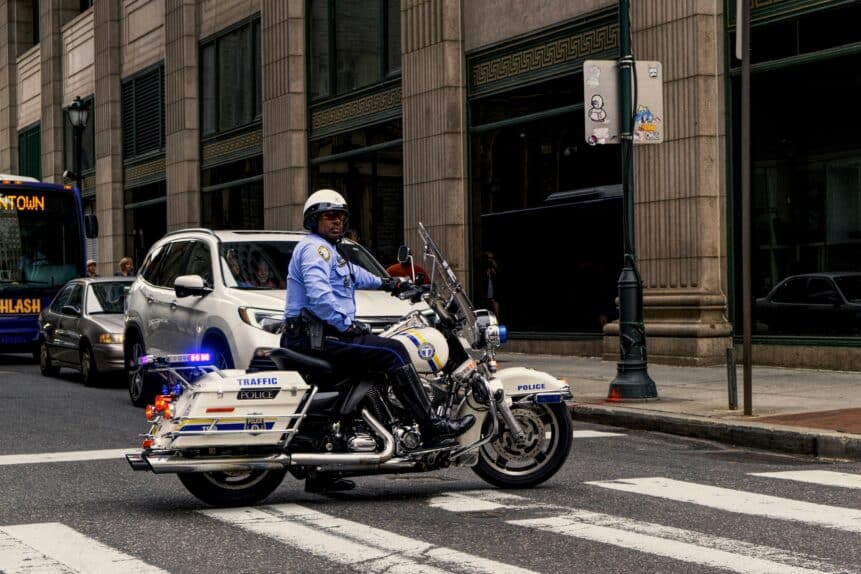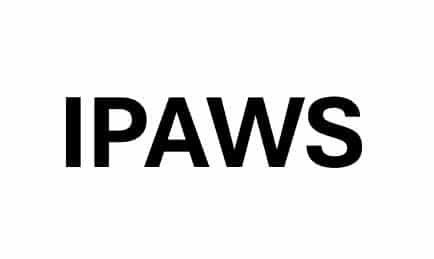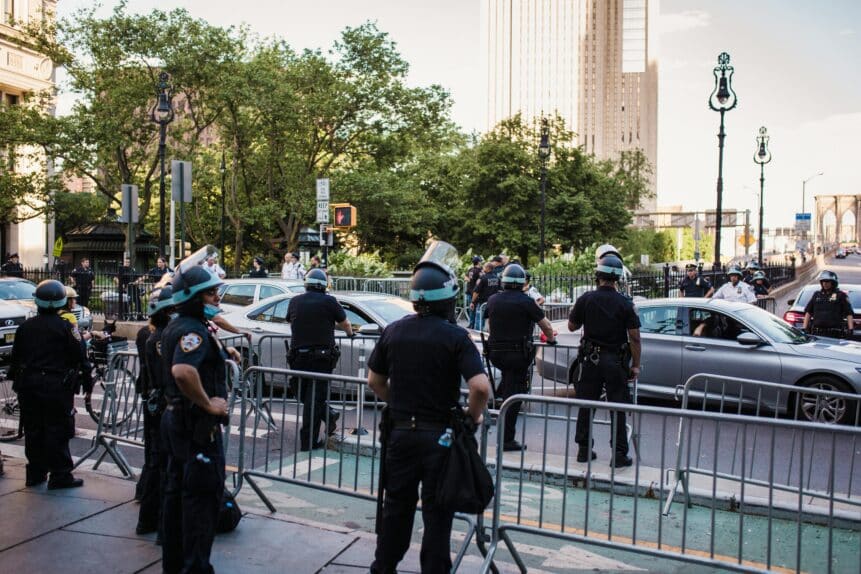By Steve Sickler, VP of Field Operations at Genasys
No time to read the whole blog? Click to see the key takeaways:
- Over the last decade working with public safety agencies, I’ve seen too many grants get spent on hardware alone. There’s a way to use those funds with wider and greater impact. You can use available terrorism preparedness grants to fund all-hazard Protective Communications solutions.
- Protective Communications systems support every phase of a major event, from planning and simulation to real-time alerts, coordination, and post-event reviews. They help you reach the public, stay connected across agencies, and control fast-moving situations before they spiral.
- With the 2026 World Cup approaching, cities like Tacoma are already putting these systems to work. This blog breaks down how you can do the same, and how Genasys can help you justify spending UASI, SHSP, or EMPG grants to make it happen.
- Genasys and its partners Lexipol and Sourcewell can handle up to 90% of the grant application and fulfill the bid requirements without a lengthy RFP process, making the process easier so you can focus on protecting your community.
I’ve worked alongside public safety agencies for the last decade. Long enough to notice a pattern every time federal grant money becomes available: the list of priorities rarely changes: Helicopters, riot gear, concrete barriers, etc. All important, sure, but often too narrow in scope.
Right now, cities across the U.S. are receiving millions in terrorism preparedness grants through UASI and SHSP. Other relevant grants like the EMPG support general emergency management. These programs help agencies prepare for catastrophic events. But most of the spending still goes toward hardware.
And that’s a missed opportunity.
Because these grants can also fund something far more versatile: all-hazard Protective Communications systems. Systems that allow you to respond quickly to any scenario, whether you’re facing wildfires, protests, power outages or any other public safety disruptions.
With the 2026 World Cup around the corner, I’m seeing cities gear up in familiar ways. But the smartest ones are taking full advantage of available grants to fund systems that will deliver value year-round.
This blog is for you, if you’re looking to make these grants work harder. I’ll show you how Protective Communications support every phase of a major event, from planning and simulation to alerts, coordination, and post-event review. I’ll also take you through how to justify this grant spending, what other agencies are doing, and steps you can take now.
1. Protective Communications Before the Event: Planning and Preparation
The 2026 World Cup is less than a year away. The planning window is open. The time to build this foundation is now.
Build Intelligent Zones for Precision
As mass notification has become more prevalent, so too has zoning. The problem is, too many systems still rely on overly broad zones, some even default to county wide areas. That’s what we had a decade ago, but it doesn’t cut it anymore. Especially not for events and stadiums.
You don’t want to light up an entire city when something happens at the stadium. You want precision. The best systems give you that, letting you draw tight, granular zones and push alerts in just a few clicks.
I’ve seen what happens when agencies wait too long and find themselves scrambling to draw boundaries mid-crisis. It slows everything down. If you haven’t built your zones yet, do it now, before you need them. Effective zoning is a crucial part of how we take response times from hours to minutes with EVAC.
Alert Templates for Speed
Speed save lives, and templates make you faster. I always recommend building a library of alerts ahead of time, covering everything from medical emergencies and crowd unrest to missing children or bomb threats. Don’t let failure of imagination get you. Start now. Think through what might happen during the World Cup, and write messages tailored to those scenarios. When time is short, pre-scripted, pre-approved alerts can go out in seconds.
Simulate Population Movements
If you’ve never modeled traffic and evacuation at World Cup scale, now’s the time. Modern simulation tools let you test crowd flow, traffic jams, or full-stadium evacuations with realistic numbers. You can even run “what if” scenarios: What if two exits are blocked? What if we need to evacuate in the middle of a match? Simulations show where bottlenecks form, how traffic moves, and where to deploy your teams ahead of time. The more you simulate, the better you can prepare yourself.
Real-Time Situational Awareness
Good decisions require good data. A strong all-hazard system gives you live insights: population counts, vehicle volume, locations of hospitals, schools, nursing homes, water plants. You can’t afford to guess. Decision-makers always do their best work when they have easy access to critical information. Easy is a critical piece here. While you don’t want to scramble around looking for missing pieces, sometimes “less is more,” since you don’t want to get overloaded sifting through irrelevant data.
Live Common Operating Picture
It’s not enough for one department to have a plan. Everyone needs access. Benefits from zoning, simulation, and situational awareness information multiply if all agencies can access them in real time. A common operating picture cuts down on radio traffic, eliminates confusion, and keeps everyone aligned, from command to field teams.
2. Protective Communications During the Event: Speed and Control
Reach Everyone, Fast
Now is the time to put your zones and templates to good use. Of course, even the precise and fast alerts are useless if they don’t reach people. That’s why I always push for a multi-channel, multi-language setup. Most emergencies require SMS, email, social media, and IPAWS at least. But for events like the World Cup, there’s more to consider. You also need channels built for noise and movement: highway digital signage, jumbotrons, in-stadium displays, and acoustic devices. We built ALERT to unify all channels and provide alerts in multiple languages, so everyone gets alerts that capture their attention and understands them.
Cut Through the Noise
I mentioned acoustic devices because at a stadium packed with fans, phones might not cut it. Crowds can spiral quickly if panic sets in and cellular networks become jammed. Our ACOUSTICS, push clear voice instructions over crowd noise, loud enough to reach inside buildings and parked cars. They immediately grab everyone’s attention and allow you to regain control if panic sets in.
Coordinate All Agencies
As you very well know, public communication is just one part of this. Internally, you need a secure, real-time information exchange to keep all agencies aligned. This is where real-time chats and a common operating picture give you the edge. You should be able to message individuals, teams, or every responder at once both in your agency and others. That includes text, photos, videos, or live docs. But be wary of illegal consumer apps like WhatsApp or Signal. They weren’t built for public safety, and they won’t protect you when the lawsuits start flying. CONNECT was built by public safety professionals for public safety professionals to fill communication gaps and enable coordinated operations.
City of Tacoma Is Preparing for the World Cup
We’ve been asking our customers how they’re using Genasys to prepare, and I’m glad to hear many are already gearing up for the World Cup.
Tacoma, Washington is one of them. As a designated fan zone, the city expects major crowds at local venues. Tieka Adeogun, their Chief Emergency Management Officer, shared how they’re getting ready with Genasys:
Protective Communications Solutions After the Event: Control, Document, Improve
Post-event crowd control
The World Cup brings passionate crowds from all over the world that may get riled up after a match and the risk that political groups use the spotlight to push illegal protests. The solution? LRADs: Portable, long-range audio devices that cut through roaring crowds, buildings, and vehicles. They deliver clear, lawful commands so people know exactly what to do. LRADs help deescalate situations without force. They’ve already proven effective in political protests and large events.
FEMA Reimbursement and After-Action Reviews
Things can go wrong. If they do, you need to justify every decision: what happened, when, why, and how you responded. This protects you from lawsuits and other repercussions. Any system you use must have automated record keeping functions.
And if you’re looking to improve, there’s no better time for an after-action review than a high-stakes event like the World Cup. Whether things run smoothly or not, your records will show what worked and what didn’t.
Plus, detailed documentation is essential to justify your spending and claim FEMA reimbursement. If you use this chance wisely, you’ll access systems that deliver year-round value, boost preparedness for any emergency, and maximize return on grant investment.
How to Justify Spending Terrorism Preparedness Grants on Protective Communications
If you’ve read this far, the answer might already be clear. UASI and SHSP grants cover categories like interoperable communications, public warning, operational coordination, critical infrastructure protection, planning, training, and exercises. Protective Communications solutions support all of these. They’re built for all-hazards. That means you can use UASI, SHSP, or even EMPG funds to invest in tools that improve performance year-round.
We’ve also partnered with Lexipol and Sourcewell to make the process easier. Lexipol can help you find the right grant and handle up to 90% of the application. And with Sourcewell, you can fullfill the bid requirements without issuing a lengthy RFP; your procurement team can move fast and stay compliant. It takes a huge load off your plate so you can focus on what matters: protecting your community.
Why Aren’t Agencies Already Doing This?
Because for years, those systems didn’t really exist, at least not in a form that worked the way agencies needed. Most systems were built for generic alerting, not the complex coordination public safety teams actually need during fast-moving emergencies.
That’s exactly what Fire Leadership in many WildFire-prone areas set out to change. After years of watching agencies struggle with slow alerts, poor zoning, and siloed communication, together we built what became EVAC (formerly Zonehaven).
EVAC was designed to solve the real-world problems we’d both seen firsthand, giving agencies the power to draw tight zones, share critical data instantly, and send clear alerts in seconds. It took response times from hours to minutes.
Eventually, we joined Genasys to take that vision even further. Today, Genasys Protect brings it all together: EVAC zoning, multi-channel mass notification, secure field communications, always-on acoustic hailing systems, and shared situational awareness, all in one Protective Communications platform.
Closing Thoughts
We’ve walked through how Protective Communications systems support safety during major events like the World Cup or the Olympics. But their value doesn’t end there. These tools are all-hazard by design, which means you’ll get use out of them whether you’re managing a large-scale emergency or a routine disruption.
These grants aren’t just for buying hard assets. They’re a rare chance to invest in scalable coordination and communication tools that make your job easier so you can be faster and more effective.
If you’re still on the fence, consider this: agencies are already using these systems not just for big emergencies, but for everyday operations. That’s daily value. And it adds up fast.
Contact us now to learn more about Genasys solutions for World Cup 2026.

